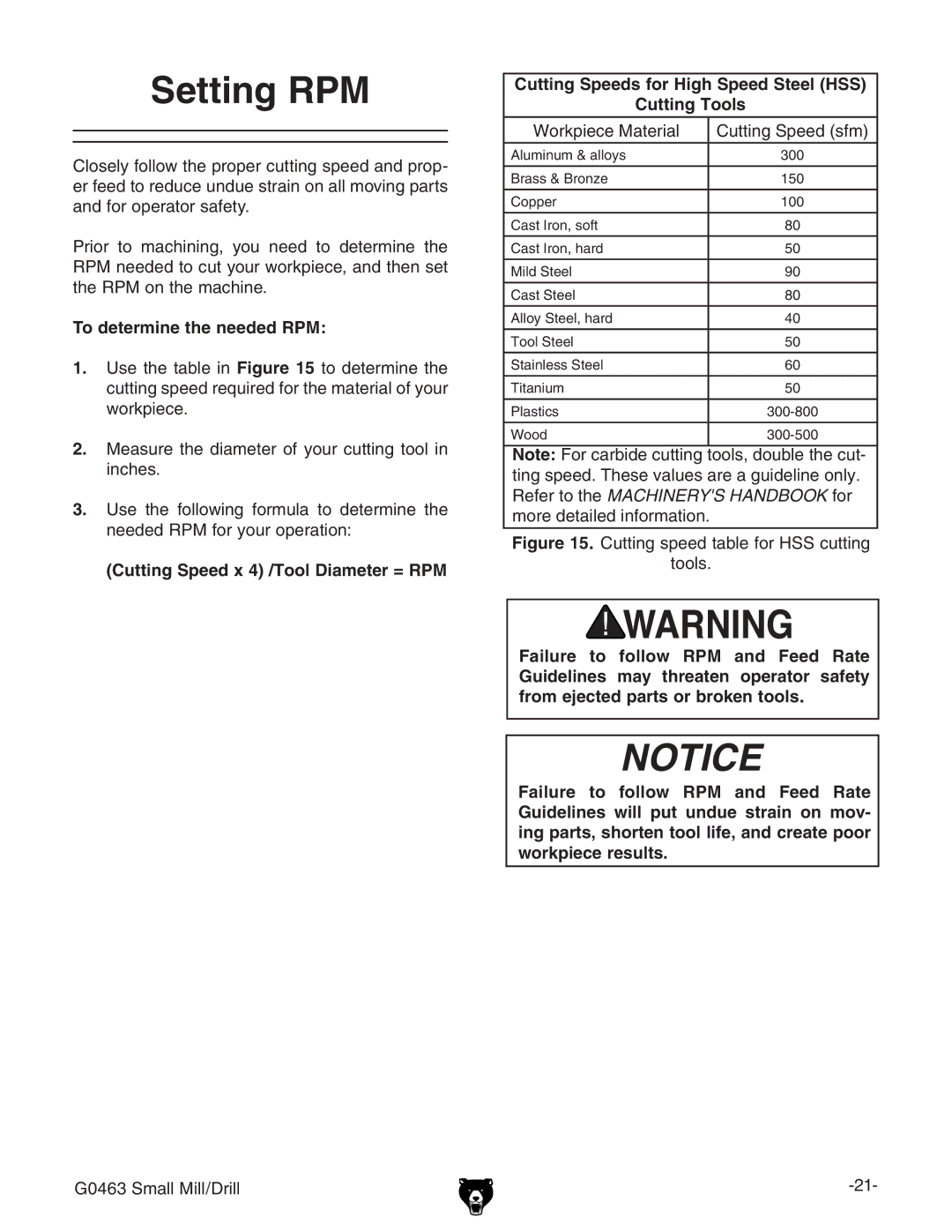
Setting RPM
Closely follow the proper cutting speed and prop- er feed to reduce undue strain on all moving parts and for operator safety.
Prior to machining, you need to determine the RPM needed to cut your workpiece, and then set the RPM on the machine.
To determine the needed RPM:
1.Use the table in Figure 15 to determine the cutting speed required for the material of your workpiece.
2.Measure the diameter of your cutting tool in inches.
3.Use the following formula to determine the needed RPM for your operation:
(Cutting Speed x 4) /Tool Diameter = RPM
G0463 Small Mill/Drill
Cutting Speeds for High Speed Steel (HSS)
Cutting Tools
Workpiece Material | Cutting Speed (sfm) |
|
|
Aluminum & alloys | 300 |
|
|
Brass & Bronze | 150 |
|
|
Copper | 100 |
|
|
Cast Iron, soft | 80 |
|
|
Cast Iron, hard | 50 |
|
|
Mild Steel | 90 |
|
|
Cast Steel | 80 |
|
|
Alloy Steel, hard | 40 |
|
|
Tool Steel | 50 |
|
|
Stainless Steel | 60 |
|
|
Titanium | 50 |
|
|
Plastics | |
|
|
Wood |
Note: For carbide cutting tools, double the cut- ting speed. These values are a guideline only. Refer to the MACHINERY'S HANDBOOK for more detailed information.
Figure 15. Cutting speed table for HSS cutting
tools.
Failure to follow RPM and Feed Rate Guidelines may threaten operator safety from ejected parts or broken tools.
NOTICE
Failure to follow RPM and Feed Rate Guidelines will put undue strain on mov- ing parts, shorten tool life, and create poor workpiece results.
